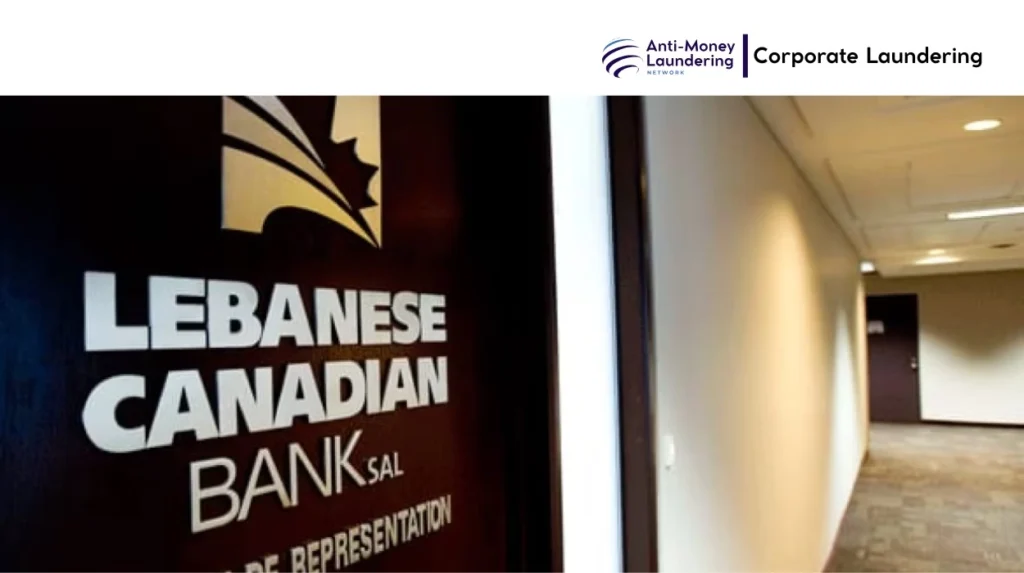Lebanese Canadian Bank SAL (LCB), headquartered in Beirut, Lebanon, was a major financial institution operating 35 branches in Lebanon and a representative office in Montreal, Canada. It offered corporate, retail, and investment banking services. LCB became widely known when extensive investigations revealed it as a core facilitator of money laundering on behalf of narcotics traffickers and Hezbollah, the Lebanese Shiite militant group designated as a terrorist organization by the U.S.
The significance of the Lebanese Canadian Bank case lies in its global implications. It demonstrated how traditional banks, under weak governance and compliance, could be exploited for laundering criminal proceeds and financing terrorism. The case exposed vulnerabilities in financial transparency, correspondent banking controls, and cross-border regulatory cooperation essential to the global AML landscape.
Background and Context
LCB was established in 1960 as Banque des Activities Economiques SAL and operated as a subsidiary of Royal Bank of Canada Middle East until 1988 when it became a privately-owned Lebanese bank. At its peak, the bank’s assets exceeded $5 billion. Its growth included subsidiaries in Lebanon and abroad, such as Prime Bank Limited based in Gambia and a brokerage company in Dubai.
Starting from at least 2007, U.S. and Lebanese authorities probed LCB’s suspicious activities. The timeline of exposure began with the DEA and U.S. Treasury’s 2011 designation of LCB as a “financial institution of primary money laundering concern” under Section 311 of the USA PATRIOT Act. The U.S. Treasury alleged that LCB laundered hundreds of millions of dollars monthly via complex trade-based schemes until its forced merger with Société Générale’s Lebanese subsidiary in 2011.
Mechanisms and Laundering Channels
The laundering facilitated by LCB prominently involved trade-based money laundering (TBML) using used cars imported from the United States, subsequently shipped to West Africa. Lebanese Canadian Bank branches, along with associated exchange companies, handled wire transfers totaling at least $329 million from 2007 to 2011. These transfers represented proceeds of narcotics trafficking and consumer goods trade, making it challenging to detect illicit flows.
LCB operated through various subsidiaries like LCB Investments SAL and Prime Bank Limited, which obscured ownership and complicated tracing the funds. The bank provided correspondent accounts enabling dollar transactions despite its apparent connections to Hezbollah and narcotics networks. These structures allowed the layering of illegal proceeds, integration into the financial system, and ultimately, terrorist financing.
Regulatory and Legal Response
Investigations led by the U.S. Treasury Department’s Financial Crimes Enforcement Network (FinCEN), the Drug Enforcement Administration (DEA), and Manhattan’s U.S. Attorney culminated in sanctions against LCB. In 2011, the bank was barred from maintaining correspondent accounts at U.S. financial institutions, effectively severing its access to U.S. dollar clearing.
Legal actions also included civil lawsuits filed in the U.S. and Canada by victims of Hezbollah attacks. Deloitte, the bank’s auditor, faced litigation for alleged audit negligence during LCB’s complicity in laundering operations. In 2013, LCB settled with the U.S. government by forfeiting $102 million. The case highlighted compliance failures and prompted scrutiny of beneficial ownership transparency, AML program deficiencies, and correspondent banking oversight, all core FATF recommendations.
Financial Transparency and Global Accountability
LCB’s case exposed severe weaknesses in monitoring and reporting suspicious activity, especially in jurisdictions with limited regulatory strength. The case underscored the need for improved Financial Transparency to identify beneficial ownership and ultimate controllers, particularly when linked to politically exposed persons (PEPs) like Hezbollah affiliates.
In response, international regulators enhanced data sharing and coordinated cross-border enforcement actions to close loopholes exploited by criminals. This case contributed to reforms in AML standards, including stricter due diligence on correspondent accounts and enhanced verification of client identities aligned with global standards.
Economic and Reputational Impact
The fallout from the LCB scandal devastated stakeholder confidence. The bank’s forced merger, financial penalties, and negative media coverage impacted partnerships, deterred investors, and weakened the Lebanese banking sector’s reputation globally. Such cases contribute to market volatility and undermine international correspondent banking relationships, essential for the financial system’s stability.
Governance and Compliance Lessons
LCB’s failures were traced to inadequate corporate governance, insufficient internal audits, and weak compliance controls enabling the concealment of illicit activities. Post-scandal, Lebanese banking regulators tightened oversight rules, compelling banks to improve AML programs, conduct enhanced due diligence, and establish rigorous audit mechanisms.
Legacy and Industry Implications
The Lebanese Canadian Bank scandal marked a turning point emphasizing the necessity of robust AML frameworks. It galvanized regulatory authorities worldwide to focus on vulnerabilities in traditional banking exploited by drug cartels and terrorist networks.
Lebanese Canadian Bank’s involvement in money laundering and terrorism financing illustrates the critical importance of Financial Transparency, stringent Corporate Governance, and effective AML measures. The case underscores global efforts to safeguard the integrity of finance against illicit abuse, reinforcing compliance as a cornerstone for international banking security.

